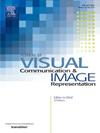BAO: Background-aware activation map optimization for weakly supervised semantic segmentation without background threshold
IF 2.6
4区 计算机科学
Q2 COMPUTER SCIENCE, INFORMATION SYSTEMS
Journal of Visual Communication and Image Representation
Pub Date : 2025-01-31
DOI:10.1016/j.jvcir.2025.104404
引用次数: 0
Abstract
Weakly supervised semantic segmentation (WSSS), which employs only image-level labels, has attracted significant attention due to its low annotation cost. In WSSS, pseudo-labels are derived from class activation maps (CAMs) generated by convolutional neural networks or vision transformers. However, during the generation of pseudo-labels from CAMs, a background threshold is typically used to define background regions. In WSSS scenarios, pixel-level labels are typically unavailable, which makes it challenging to determine an optimal background threshold. This study proposes a method for generating pseudo-labels without a background threshold. The proposed method generates CAMs that activate background regions from CAMs initially based on foreground objects. These background-activated CAMs are then used to generate pseudo-labels. The pseudo-labels are then used to train the model to distinguish between the foreground and background regions in the newly generated activation maps. During inference, the background activation map obtained via training replaces the background threshold. To validate the effectiveness of the proposed method, we conducted experiments using the PASCAL VOC 2012 and MS COCO 2014 datasets. The results demonstrate that the pseudo-labels generated using the proposed method significantly outperform those generated using conventional background thresholds. The code is available at: https://github.com/i2mond/BAO.
BAO:无背景阈值弱监督语义分割的背景感知激活图优化
弱监督语义分割(WSSS)仅使用图像级标签,因其标注成本低而备受关注。在WSSS中,伪标签来源于卷积神经网络或视觉转换器生成的类激活图(CAMs)。然而,在从cam生成伪标签的过程中,通常使用背景阈值来定义背景区域。在WSSS场景中,像素级标签通常不可用,这使得确定最佳背景阈值具有挑战性。本研究提出一种无背景阈值的伪标签生成方法。该方法基于前景目标,从初始的cam生成激活背景区域的cam。然后使用这些背景激活的cam来生成伪标签。然后使用伪标签来训练模型在新生成的激活图中区分前景和背景区域。在推理过程中,通过训练得到的背景激活图代替背景阈值。为了验证该方法的有效性,我们使用PASCAL VOC 2012和MS COCO 2014数据集进行了实验。结果表明,使用该方法生成的伪标签明显优于使用传统背景阈值生成的伪标签。代码可从https://github.com/i2mond/BAO获得。
本文章由计算机程序翻译,如有差异,请以英文原文为准。
求助全文
约1分钟内获得全文
求助全文
来源期刊

Journal of Visual Communication and Image Representation
工程技术-计算机:软件工程
CiteScore
5.40
自引率
11.50%
发文量
188
审稿时长
9.9 months
期刊介绍:
The Journal of Visual Communication and Image Representation publishes papers on state-of-the-art visual communication and image representation, with emphasis on novel technologies and theoretical work in this multidisciplinary area of pure and applied research. The field of visual communication and image representation is considered in its broadest sense and covers both digital and analog aspects as well as processing and communication in biological visual systems.
 求助内容:
求助内容: 应助结果提醒方式:
应助结果提醒方式:


